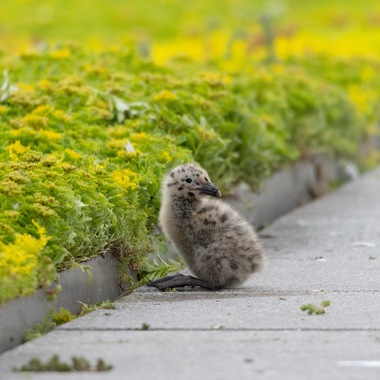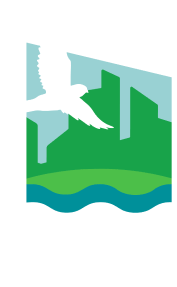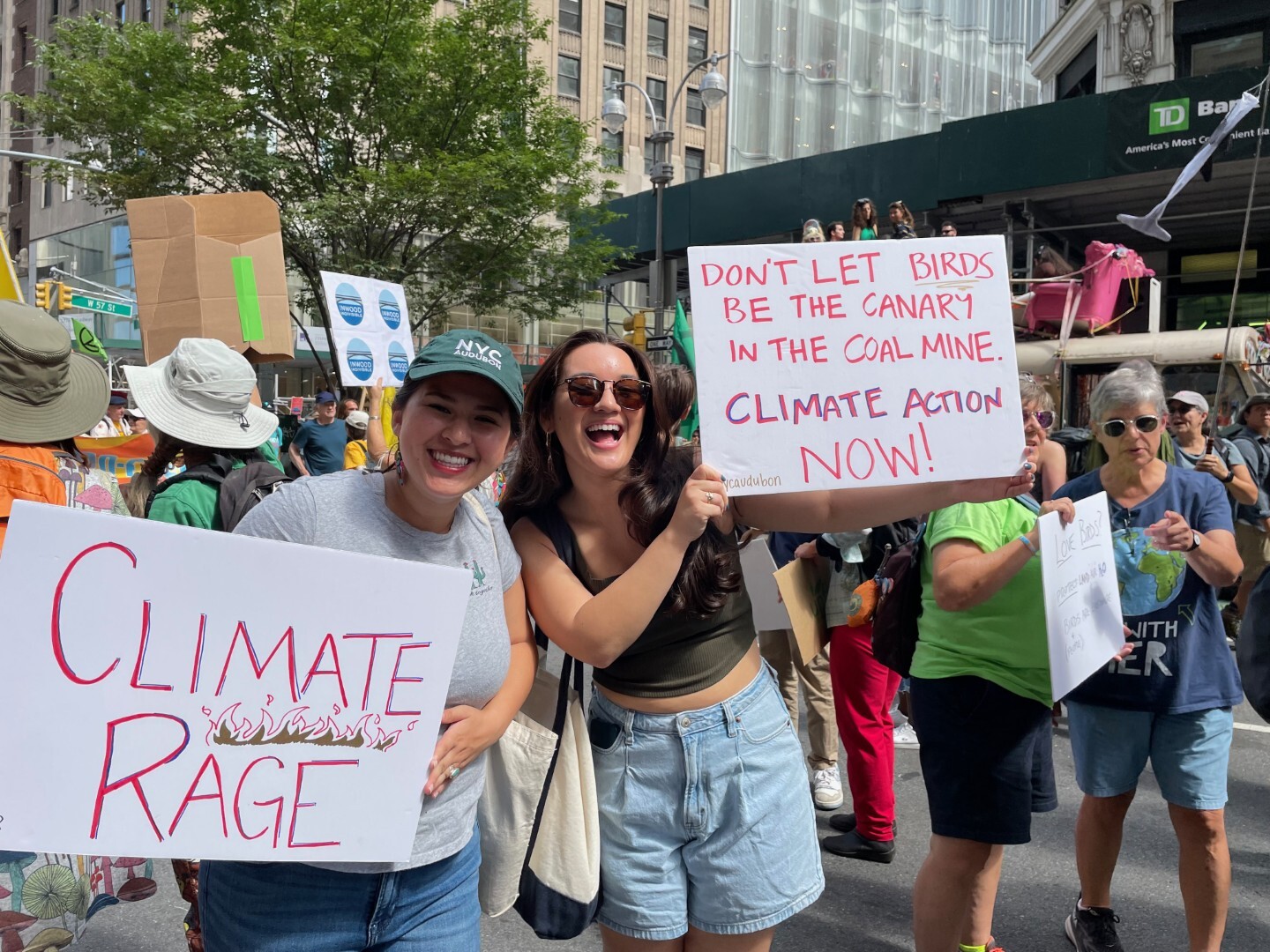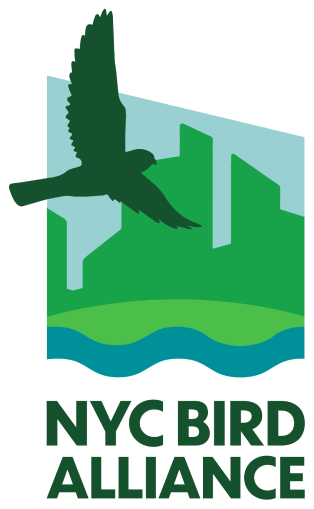Green Roofs and Infrastructure
Kingsland Wildflowers Green Roof atop Broadway Stages in Greenpoint, Brooklyn. Photo: NYC Bird Alliance.
THE IMPORTANCE OF URBAN GREEN SPACE
- NYC Bird Alliance works to preserve natural habitat in the City and safeguard the ecological services that protect both people and wildlife.
- As the City prepares for the effects of climate change, city planners have begun designing built infrastructure that mimics our natural ecosystem, such as green roofs which absorb and retain storm water, improve air quality, reduce the urban heat island effect, and provide critical foraging habitat for birds.
To protect birds, we advocate for:
- Legislation that incentivizes the creation of green roofs and green infrastructure to make the City more healthy and climate-resilient for both birds and people.
Atop the 6.75-acre green roof on the Javits Center. PC: Argenis Apolinario.
.jpg)
A Herring Gull chick that hatched on the Javits green roof. PC: Christine Cieslak.
Green infrastructure will help reduce flooding from storms and improve air quality.
SHOW SUPPORT: THANK GOVERNOR HOCHUL
The 2024 Green Roof Tax Abatement renewal will create urban habitat for wild birds, help New York City adapt to climate change, and equitably distribute green roofs across the five boroughs, especially Environmental Justice communities.
By thanking Governor Hochul for renewing the Green Roof Tax Abatement, we're showing continued support for a more green, climate-resilient, and bird-friendly NYC!



